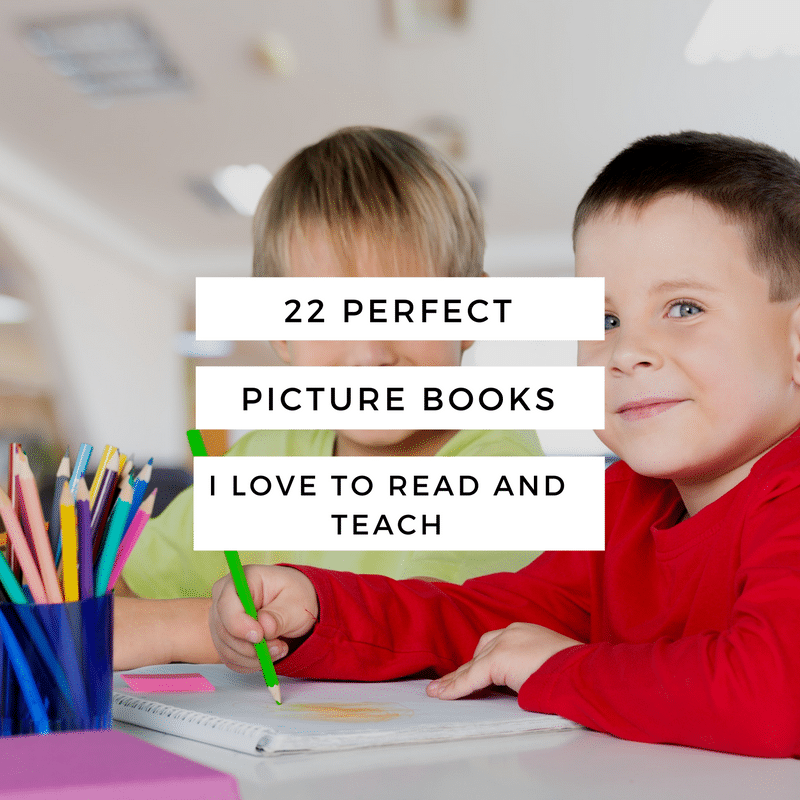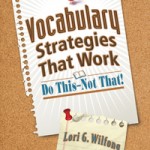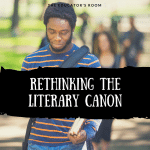[fusion_builder_container hundred_percent=”yes” overflow=”visible”][fusion_builder_row][fusion_builder_column type=”1_1″ background_position=”left top” background_color=”” border_size=”” border_color=”” border_style=”solid” spacing=”yes” background_image=”” background_repeat=”no-repeat” padding=”” margin_top=”0px” margin_bottom=”0px” class=”” id=”” animation_type=”” animation_speed=”0.3″ animation_direction=”left” hide_on_mobile=”no” center_content=”no” min_height=”none”]
The best, best, best part of any day was reading aloud to my class. I had hundreds of favorite books: poetry, fiction chapter books (a.k.a. novels), and picture books, both fiction and non-fiction. I read books with wonderful illustrations or books with no pictures with zeal. My class just rolled their eyes when I said, “This is one of my all time favorite books!” I said that about nearly every book I read. After all, what’s the point of sharing a book you don’t love?
[bctt tweet=”After all, what’s the point of sharing a book you don’t love?” username=”EducatorsRoom”]
Here is a list of some of my favorite picture books of all time. They are in no particular order. I couldn’t begin to list every read aloud book I love but this list will surely lead you on a path to find your own favorites. Some of the books are no longer in print but check out your public library.
The suggested activities can be done in a classroom or at home. I’ll follow this article with another on chapter books, so stay tuned.
1. Duck! Rabbit! By Amy Krouse Rosenthal & Tom Lichtenheld: This is a funny book with the message that we each see things differently.
2. Wempires By Daniel Pinkwater: A very silly vampire story that is perfect for discussing plot.
3. Sandy’s Circus by Tanya Lee Stone: The story of Alexander Calder and his circus. I read this each year to coincide with our science unit on balance. You can find video of Calder performing his circus here.
4. The Bicycle Man by Allan Say: A book that takes place in post-WWII Japan. It is perfect for discussing how our opinions change as we discover what we have in common.
5. Abe Lincoln: A Boy Who Loved Books by Kay Winters and Nancy Carpenter: While your children listen, have them make a list of what they have in common with Lincoln beginning with loving books. After we did this, I had my class turn their notes into paragraphs.
6. Come A Tide by George Ella Lyon: I love reading this story. It is full of idioms. After listening to it, have the kids start making notes of the idioms they hear. This is especially good for ELL students.
7. The Summer My Father Was Ten by Pat Brisson: I always read this the first time without showing the class the pictures. I had them draw what they thought the tomato fight looked like. We then went back and read it again with the illustrations. This is a perfect reading lesson on visualization or writing lesson on “showing not telling.”
8. Dear Mr. Blueberry by Simon James: This informational fiction book is a wonderful way to begin a study of whales.
9. Skippyjon Jones Lost in Spice by Judy Schachner: I love Skippyjon! He has such a wonderful imagination. He is also perfect for showing how dialogue moves a story.
10. Interrupting Chicken by David Ezra Stein: I have a thing about chickens. I actually had a book bin for chicken books. This is such a wonderful story to start a discussion about patience and listening.
11. Cookies: Life Lessons by Amy Krouse Rosenthal: Each fall in second grade, we studied personal characteristics and emotions to expand our vocabulary. This delightful book is a perfect tool for just that. I always told my class that I had only good characteristics – except I was the greedy one when it came to cookies.
12. Stone Soup by Jon J Muth: This has always been one of my favorite folktales and Muth’s version of it is my favorite version. It shows that by joining together we can accomplish something wonderfully tasty.
13. Goldilocks and the Three Dinosaurs by Mo Willems: Sarcasm abounds in this wonderful version of the Three Bears. Pair it with the traditional story for a perfect for a compare/contrast activity.
14. Ish by Peter H. Reynolds: Second graders are perfectionists and when they started to get overwhelmed by their desire for it to be exactly right, I would get out this story.
15. Everyone Knows What a Dragon Looks Like by Jay Williams: You’ll have to find this at the library but it is worth the trek. It is a beautifully majestic story about respect and perception. It is a little long, so you might have to divide into two readings.
16. A You’re Adorable by Martha Alexander: Just sing it. It will be adored by the little ones and give the older ones something to love to hate. This is because they love that you love them but “K is for Kissable” puts them right over the edge.
17. Frank Was a Monster Who Wanted to Dance by Keith Graves: Just a silly, gross monster book about Frank’s misadventure and joy while dancing.
18. The Wednesday Surprise by Eve Bunting: This story by my favorite author is perfect for making predictions, reevaluating those predictions, and discussing the surprise at the end.
19. Yours Truly, Goldilocks by Alma Flor Ada and Leslie Tyron: This is a book of letters between storybook characters. In a classroom, we assigned each student a fairytale character and then they had to write to the other “characters” in our classroom. One year, we did this with our sixth-grade buddies. The letters are always hilarious and we had such fun writing them. After reading this book, write a few of your own letters from the point of view of your favorite book character.
[bctt tweet=”Remember, if you love to read, your children will love to read.” username=”EducatorsRoom”]
20. Alexander and the Terrible, Horrible, No Good, Very Bad Day by Judith Viorst: An oldy, but a goody. We all understand Alexander’s day and the desire to run away. It is a great book to use as a mentor text for writing.
21. The Hatseller and the Monkeys by Baba Waque Diakite: It is a beautiful African version of Dr. Suess’ Hats for Sale. It is a great lead into a debate about preference.
22. 17 Kings and 42 Elephants by Margaret Mahy and Patricia MacCarthy: This marvelous rhyme is a joy to read. Afterwards, I like to poise the question of how many elephants did each king have. What would the kings have done with the extra elephants? I let partners work together to solve the math problem and share their solutions. My favorite answer was each king got one elephant. The other twenty-five were for a BBQ.
Remember, if you love to read, your children will love to read.[/fusion_builder_column][/fusion_builder_row][/fusion_builder_container]







